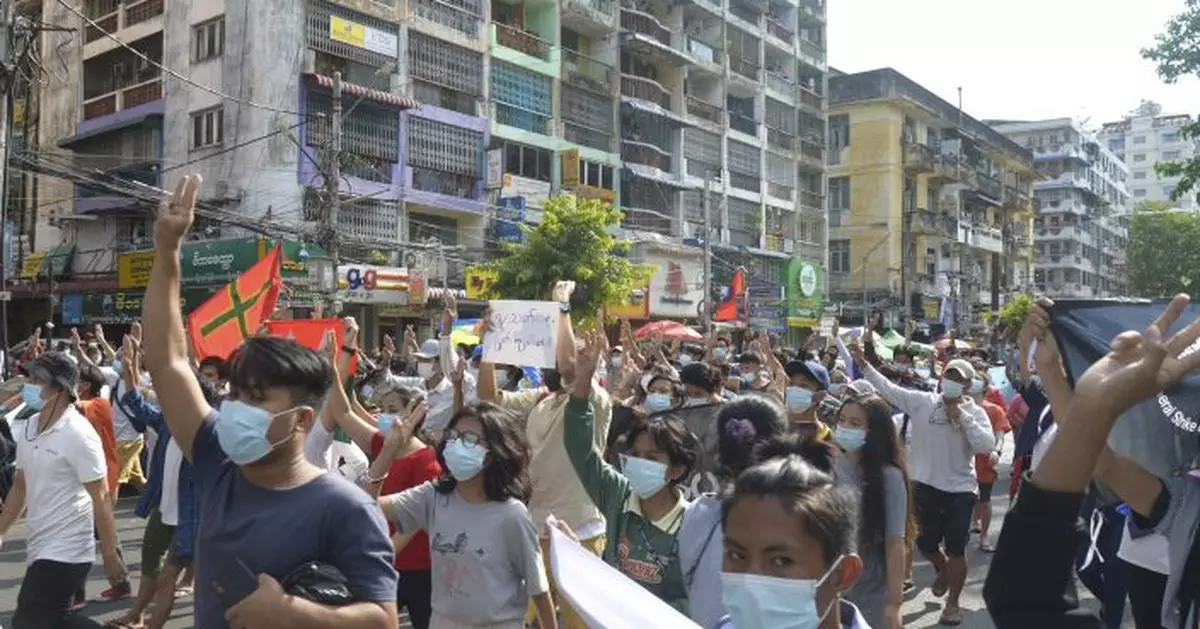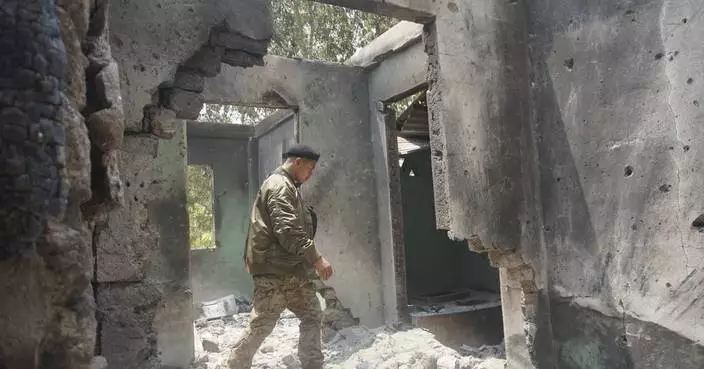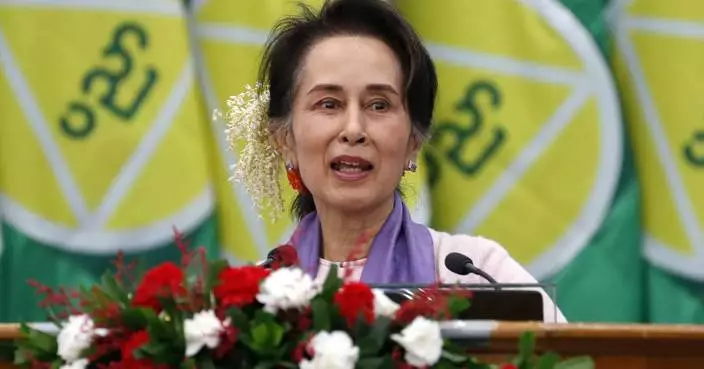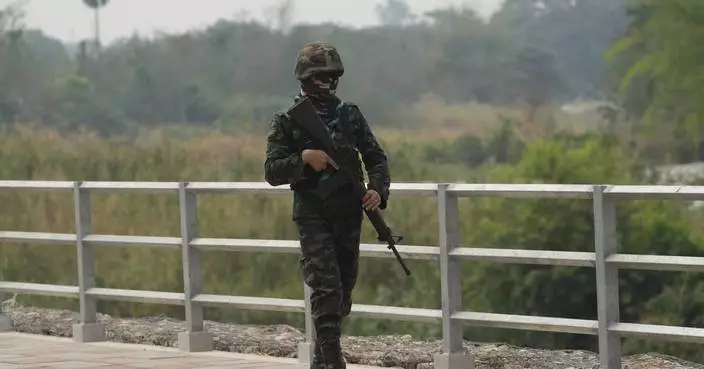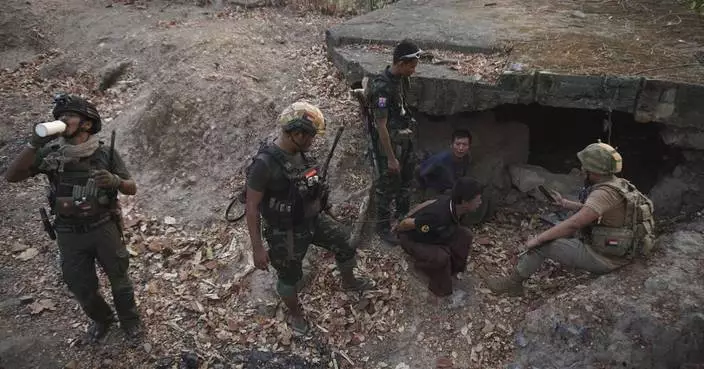A flash mob of mostly young people in Myanmar’s biggest city staged a brief protest march Thursday against military rule, the latest in a series of actions aimed at reducing the chances of a deadly response by the authorities.
In the five-minute protest in Yangon, about 70 marchers chanted slogans in support of the civil disobedience movement that opposes February’s army coup that ousted the elected government of Aung San Suu Kyi. They then scattered into the downtown crowds.
Protests also took place in other cities and towns including Mandalay, the country’s second biggest city, where Buddhist monks marched, and Dawei in the southeast, where the demonstrators included engineers, teachers, university students and members of LGBT groups.
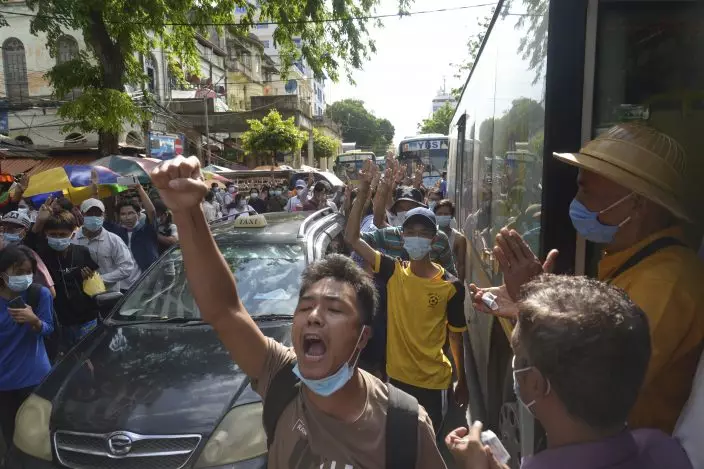
Anti-coup protesters shout slogans during a demonstration on Thursday, May 6, 2021, in Yangon, Myanmar. More than 200 global organizations urged the U.N. Security Council on Wednesday, May 5, 2021, to impose an arms embargo on Myanmar, saying the time for statements has passed and immediate action is needed to help protect peaceful protesters against military rule and other opponents of the junta. (AP Photo)
Demonstrators in Dawei tore up and set fire to textbooks as they called for a boycott of schools, which are due to re-open soon after a long shutdown due to the coronavirus pandemic.
In the past week, towns and cities across the country have seen similar protests, some involving primary school students. Campaigners say the education system is poor and should be scrapped. They also want to stop schools from opening to prevent the junta from claiming that normalcy is returning after months of turmoil.
In Yangon in particular, small protests publicized by word of mouth have become popular. They contrast with weeks of confrontations in which security forces increasingly used lethal force, with some militant protesters responding with homemade weapons such as gasoline bombs in self-defense.
In other areas, mass peaceful protests still are being broken up by force, while in some remote areas, groups opposed to the ruling junta have occasionally ambushed security forces, leading to bloody clashes.
According to the Assistance Association for Political Prisoners, which compiles details of arrests and fatalities linked to the junta’s crackdown, 769 protesters and bystanders have been killed since February’s military takeover. The junta has said the death toll is about one-third of that, and that the use of lethal force was justified to end what it called rioting.
After the military government began using lethal force to suppress demonstrations, protesters in some towns and neighborhoods began organizing themselves into home-grown militias or defense groups.
On Wednesday, the anti-military shadow government formed by elected lawmakers who were barred from taking office by the military announced a plan to unify these local groups into a national “People’s Defense Force” which would serve as a precursor to a “Federal Union Army” of democratic forces including ethnic minorities.
The plan was announced by Khin Ma Ma Myo, deputy defense minister of the shadow National Unity Government, which challenges the junta’s legitimacy. She said one of the duties of the People’s Defense Force is to protect the country’s resistance movement from military attacks and violence instigated by the junta.
The National Unity Government has the backing of several major ethnic minority groups who for decades have been seeking greater autonomy and who maintain their own guerrilla forces. The two most important are the Kachin in the north and the Karen in the east, both of which are actively engaged in combat with the government’s military forces.
Pado Man Man, a spokesman for the 5th Brigade of the Karen National Union, said he believes that the formation of the People’s Defense Army will be a step toward a future state that includes all ethnic armed groups.
“The emergence of the People’s Defense Army is even a little bit late. We have the same direction and purpose. We are now cooperating,” he said.
Since the military's seizure of power and crackdown on opponents, students and factory workers have fled to territory controlled by the ethnic guerrilla forces to take military training.
Allergy season can bring misery to tens of millions of Americans each year.
Tree, grass, and other pollens can cause runny noses, itchy eyes, coughing and sneezing.
Where you live and what you're allergic to can make a big difference in how bad your allergies are, but there are many things you can do to feel better.
Here are some tips from experts to keep allergies at bay — maybe even enough to allow you to enjoy the outdoors.
There are three main types of pollen. Earlier in the spring, tree pollen is the main culprit. After that grasses pollinate, followed by weeds in the late summer and early fall.
Some of the most common tree pollens that cause allergies include birch, cedar, cottonwood, maple, elm, oak and walnut, according to the Asthma and Allergy Foundation of America. Grasses that cause symptoms include Bermuda, Johnson, rye and Kentucky bluegrass.
The best and first step to controlling allergies is avoiding exposure. That’s easier said than done when it's nice out.
Start with keeping your windows closed at home and in the car, avoiding going out when pollen counts are highest and changing clothes when you get home. The same masks that got us through the pandemic can protect you from allergies — though they won't help with eye symptoms.
Pollen trackers can help with planning. The American Academy of Allergy Asthma and Immunology tracks levels through a network of counting stations across the U.S. Counts are available at its website and via email.
You can't fight an enemy you don't know.
Since many Americans are allergic to several things at once, the first thing to figure out is what specifically you’re allergic to, said Dr. Nana Mireku, an allergist in the Dallas-Fort Worth area.
Over-the-counter nasal sprays can help relieve symptoms, but they take a while to kick in, so it’s best to start them in early in the season, said Dr. Rachna Shah, an allergist and director of the Loyola Medicine Allergy Count.
Antihistamines are another option. Shah said she’s seen some patients benefit from switching to a similar brand if one stops working, but said that there isn’t much broader data to back the recommendation.
For young children and people who have to take many different allergy medications, immunotherapies in the form of shots and oral drops can help desensitize the immune system to allergens, treating symptoms at their root.
The Asthma and Allergy Foundation of America issues an annual ranking of the most challenging cities to live in if you have allergies, based on over-the-counter medicine use, pollen counts and the number of available allergy specialists. This year, the top five were Wichita, Kansas; Virginia Beach, Virginia; Greenville, South Carolina; Dallas; and Oklahoma City.
If you've been thinking it started earlier and seems longer this year, you're on to something.
Shah usually starts looking at pollen counts in the Chicago area in April. But this year, she peeked at her data in mid-February, and tree pollen was already at a “moderate” level.
“This season has been so nuts,” she said. “Granted, it was a pretty mild winter, but I didn’t expect it to be so early.”
Shah said she believes this season will be longer than other years, assuming the weather remains warm.
Experts say climate change has led to longer and more intense allergy seasons.
The Associated Press Health and Science Department receives support from the Robert Wood Johnson Foundation. The AP is solely responsible for all content.
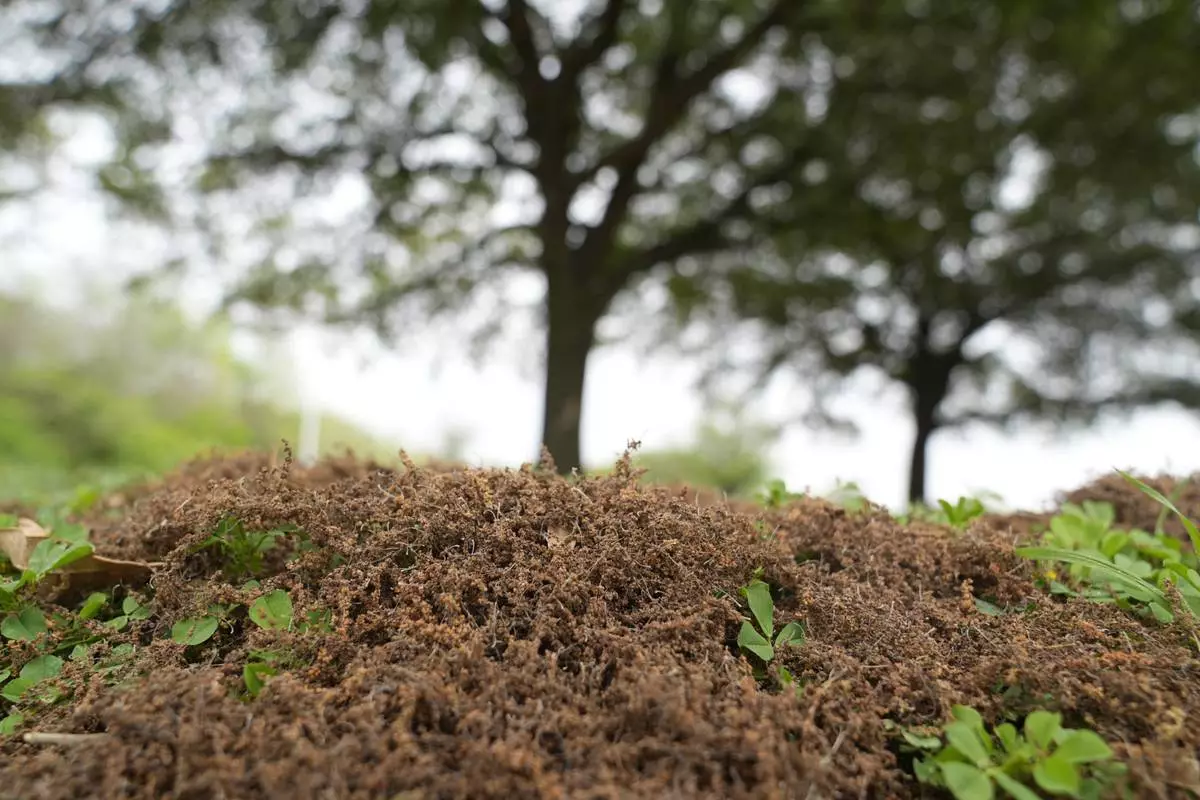
FILE - Tree pollen pods lay in a pile at a park in the Dallas suburb of Richardson, Texas, Thursday, March 21, 2024. The Asthma and Allergy Foundation of America issues an annual ranking of the most challenging cities to live in if you have allergies, based on over-the-counter medicine use, pollen counts and the number of available allergy specialists. In 2024, the top five were Wichita, Kansas; Virginia Beach, Virginia; Greenville, South Carolina; Dallas; and Oklahoma City. (AP Photo/LM Otero, File)
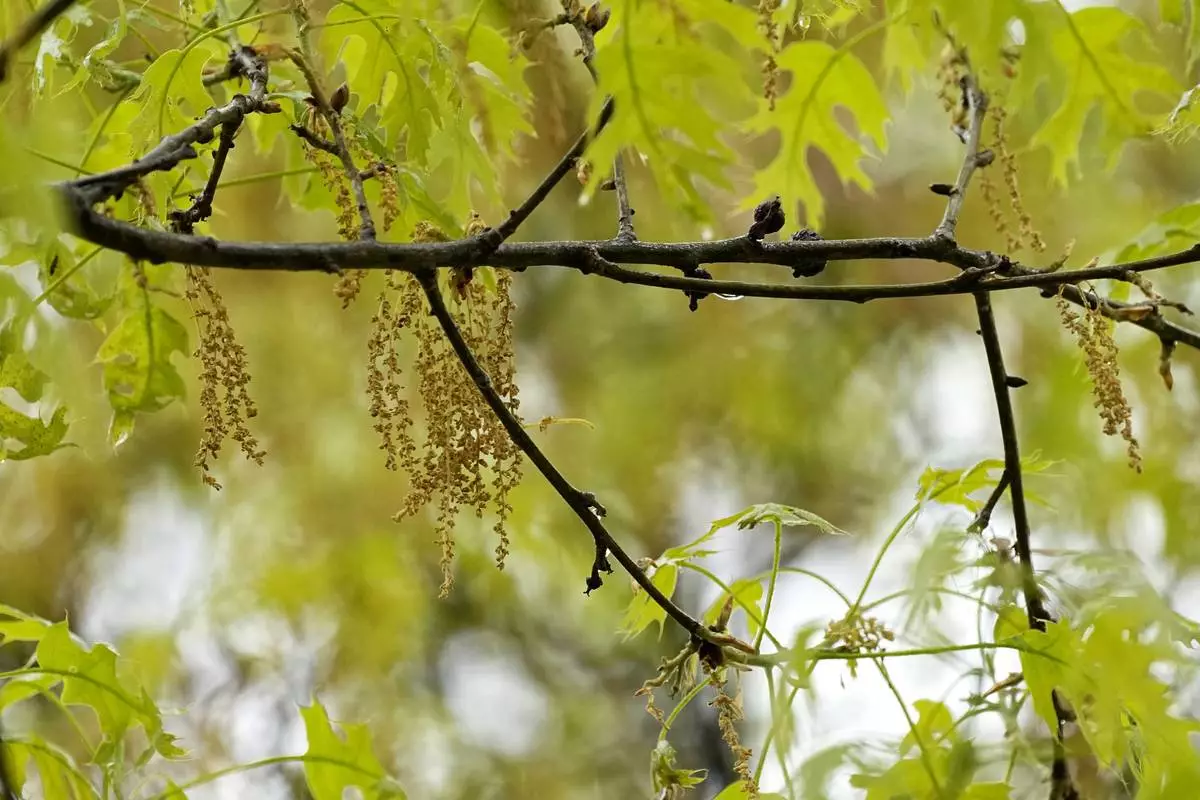
FILE - An oak tree with new leaf growth also shows pollen and a drop of water hanging among the branches at a park in Richardson, Texas, Thursday, March 21, 2024. There are three main types of pollen. Earlier in the spring, tree pollen is the main culprit. After that grasses pollinate, followed by weeds in the late summer and early fall. (AP Photo/Tony Gutierrez, File)



